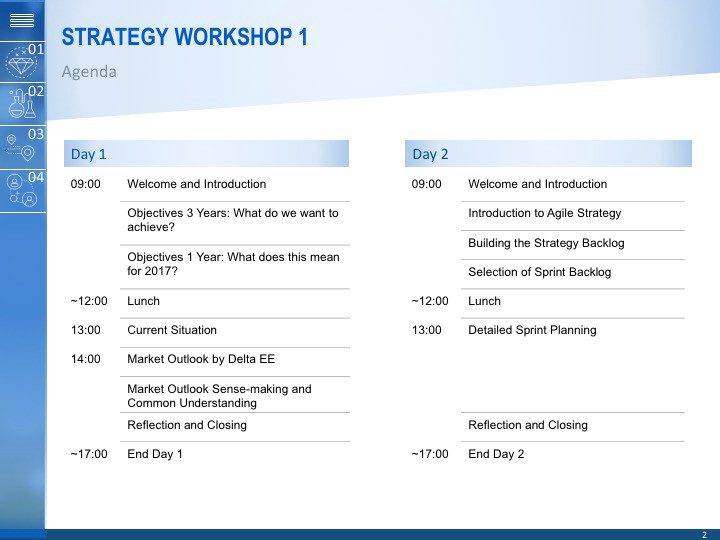How we craft strategy in agile sprints
A Sprint-based Approach to Making and Executing Strategy
Saturday, April 22, 2017
Part 1 — The Agile Strategy System
A new client company approached me a couple of months ago to support its growth strategy. Having gone through years of turnarounds, downsizing, and divestitures, growth was lacking. The management team had discussed the strategy for several months, without being able to make crucial decisions or progress, and the owner was starting to become impatient for results.
To get out of endless discussions, switch gears into an execution mode, and start making progress fast — the next performance review was due in 3 months — I proposed an agile sprint-based approach to making and executing strategy.
Why Crafting Strategy in Agile Sprints?
As I have outlined elsewhere, the traditional approach to strategy, decomposing the process into a linear sequence of analysis, planning, and implementation, has reached its limits in an increasing number of organizations and contexts (see here for example).
PLAN. (v.t.) TO BOTHER ABOUT THE BEST METHOD OF ACCOMPLISHING AN ACCIDENTAL RESULT.
— AMBROSE PIERCE Author, The Devil’s Dictionary
“Crafting strategy” denotes a practice combining planned with emergent strategy, strategy design with concurrent strategy execution. While it might seem counterintuitive, complex environments require you to execute before you know what needs to be designed. In such environments, spending a lot of time on thorough analysis will actually not yield any benefits. (Have a look at my research for a more theoretical explanation. Jump to discussion and conclusion on page 220. Snowden and Boone’s cynefin framework also nicely explains the need for different problem-solving approaches when faced with complex circumstances. Have a look at their HBR article on decision making).
“Crafting strategies in statu nascendi: the practice of concurrent design and execution of a strategy.”
Simultaneous analysis, design, and execution require an iterative procedure. The idea and philosophy behind agile sprints seem to offer a framework for crafting strategy in such a fashion.
The Elements of the Agile Strategy System
The basic idea of the Agile Strategy System is quite simple. Leaning on scrum, we have a backlog, sprint planning sessions, sprint executions, and retrospectives.
Each month we get together, review the outcomes and results of the sprint, update the backlog as needed, pick the items to work on during the next sprint of 4 weeks, and plan out each item in detail, defining who is responsible, what the deliverables at the end of the spring are, and we plan out activities for each week. (You can download the template we use for sprint planning at the end of the article.)
The Agile Strategy System is composed of 4 elements:
- Orientation
- Sprint planning I (what to work on) and II (how)
- Sprint execution
- Retrospective (outcome of the sprint) and Reflection (process of the sprint)

The Orientation Workshop
We had to start somewhere. On the one hand, the management team needed clarity about what they wanted, needed, and must do. On the other hand, we needed a starting point for our joint work and strategy engagement.
During our first joint workshop, the management team worked on defining where they wanted to take the company in the next 3 years, and breaking the 3 year aspirations into specific objectives for the first year.
Based on these discussions we created a backlog of (1) questions that needed to be answered (basically challenges that needed to be resolved), (2) assumptions that needed to be tested, and (3) strategic moves, that is things the team was sure without a doubt needed to be implemented.

The management team picked 3 topics from the backlog for the first sprint through dot-voting, they teamed up in pairs of two to take responsibility for a topic, defined the deliverables for the first sprint, and planned the next 4 weeks in detail.

In a future article, I will outline how we work with the system on a monthly basis, and I will keep sharing our experiences, telling you what works well and what does not, and what we learn along the way.
Follow me to learn more and stay tuned for updates on how we work with agile strategy sprints.
You can download the PowerPoint version of the graphics and the sprint planning template here.
I’m writing a new book on Lean & Agile Strategy. Sign up here to get early access.


